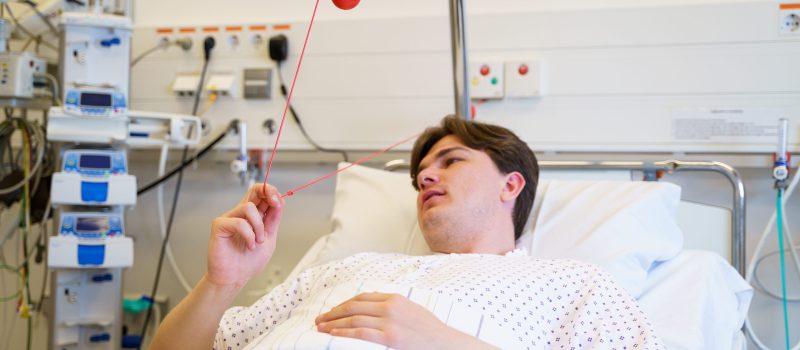Managing alarms and alerts without the chaos
The challenge
In a busy hospital, alarms and alerts are a part of every shift. Whether it’s a patient calling for help, a heart monitor warning of low oxygen, or a fire panel needing attention. But when everything feels urgent, it’s easy to lose track of what truly is.
Before, the only way to respond to alarms was to rely on overhead paging, shared signals or phones that rang endlessly. Staff were interrupted by alerts that weren’t meant for them, or worse — critical alarms got lost in the noise. This constant flood of signals creates both stress and fatigue for frontline staff, delayed responses to patients in need, over-reliance on manual checks and calls and disrupted patient rest from unnecessary noise.
The approach
Hospitals are now simplifying how alarms and alerts are handled — making sure the right people get the right signal, at the right time, without the noise.
Instead of sounding alarms for everyone, the system routes messages based on roles, responsibilities and current shifts. A nurse no longer hears about a problem across the ward unless it’s theirs to act on. And when something is urgent — like a cardiac arrest or a security incident — it reaches the right responder immediately, with all the context they need.
Related case studies
50% drop
in noise and 12% increase in sleep quality as a result of Silent Hospital approach at Royal Cornwall Hospitals NHS Trust >
£3,000 saved per bed
as a result of improved communication and digitising and silencing nurse calls at Royal Cornwall Hospitals NHS Trust >
Time savings
as a result of more accurate requests and reduced inefficiencies. Watch how Østfold Hospital utilises alarm management in their daily operations >
How it works in practice
Clear responsibility
Staff receive alarms only for the patients or areas they’re currently responsible for. If they don’t respond in time, the alert escalates automatically to the next person or team.
Fewer interruptions
Routine alerts, like food delivery or supply drop-offs, still arrive — but quietly and only to the relevant support staff. There’s no need for repeated calls or overhead announcements.
More precision
A nurse call no longer means walking into a four-bed room and guessing who pressed the button. Alerts show exactly which bed and which patient — saving time and avoiding confusion.
Support teams stay in sync
Whether it’s a medication delivery via pneumatic tube, or an AGV arriving with laundry, staff know in advance and can plan accordingly — without ever leaving the ward to check.
Results seen in practice
Hospitals that use this approach report:
Faster responses to critical events like cardiac arrest or oxygen drops
Less stress and fewer distractions for clinical teams
Reduced noise levels, improving patient rest and recovery
Improved coordination between clinical and non-clinical staff
Better use of time, especially during peak hours and shift changes


Why it matters
Managing alarms creates the conditions for safer, calmer care. When alarms and alerts are directed, quiet, and purposeful, staff stay focused, patients feel safer, and hospitals run more smoothly.
Want to learn how to manage alarms without the chaos?
Interested in creating a calmer, more focused care environment? The Silent Hospital approach replaces chaotic alarms with smart, silent notifications—helping staff with better workflow while improving patient sleep and recovery.
Let’s talk about how this could work in your hospital.


